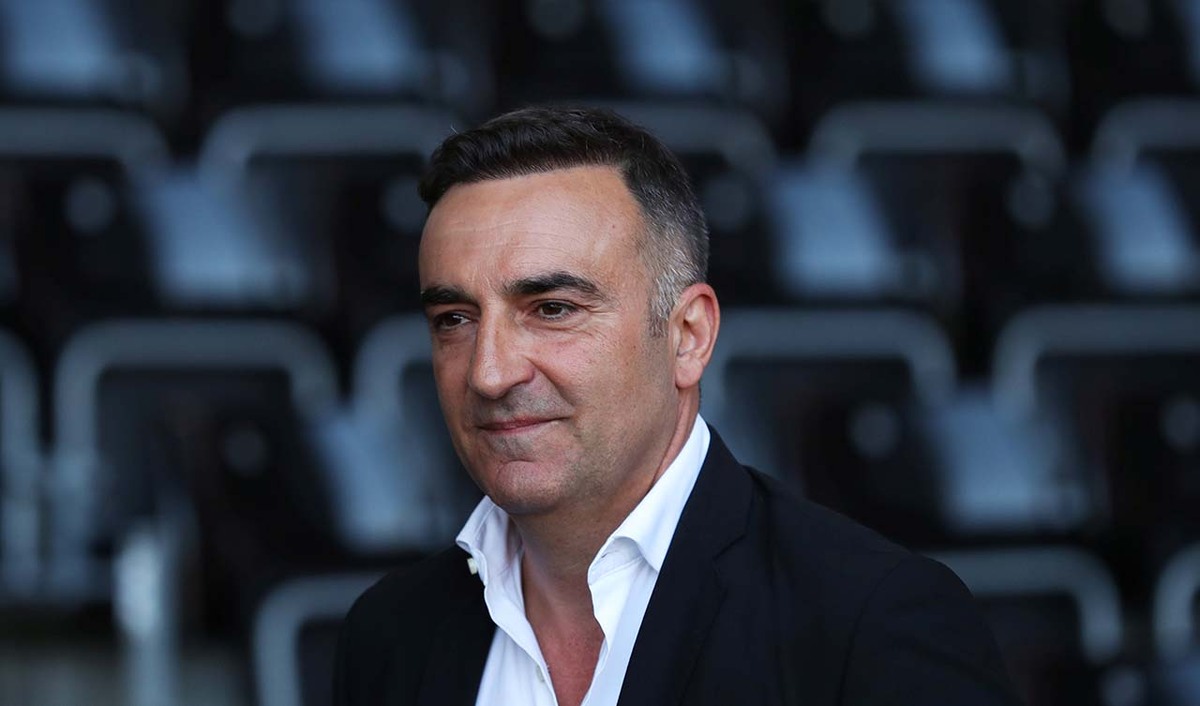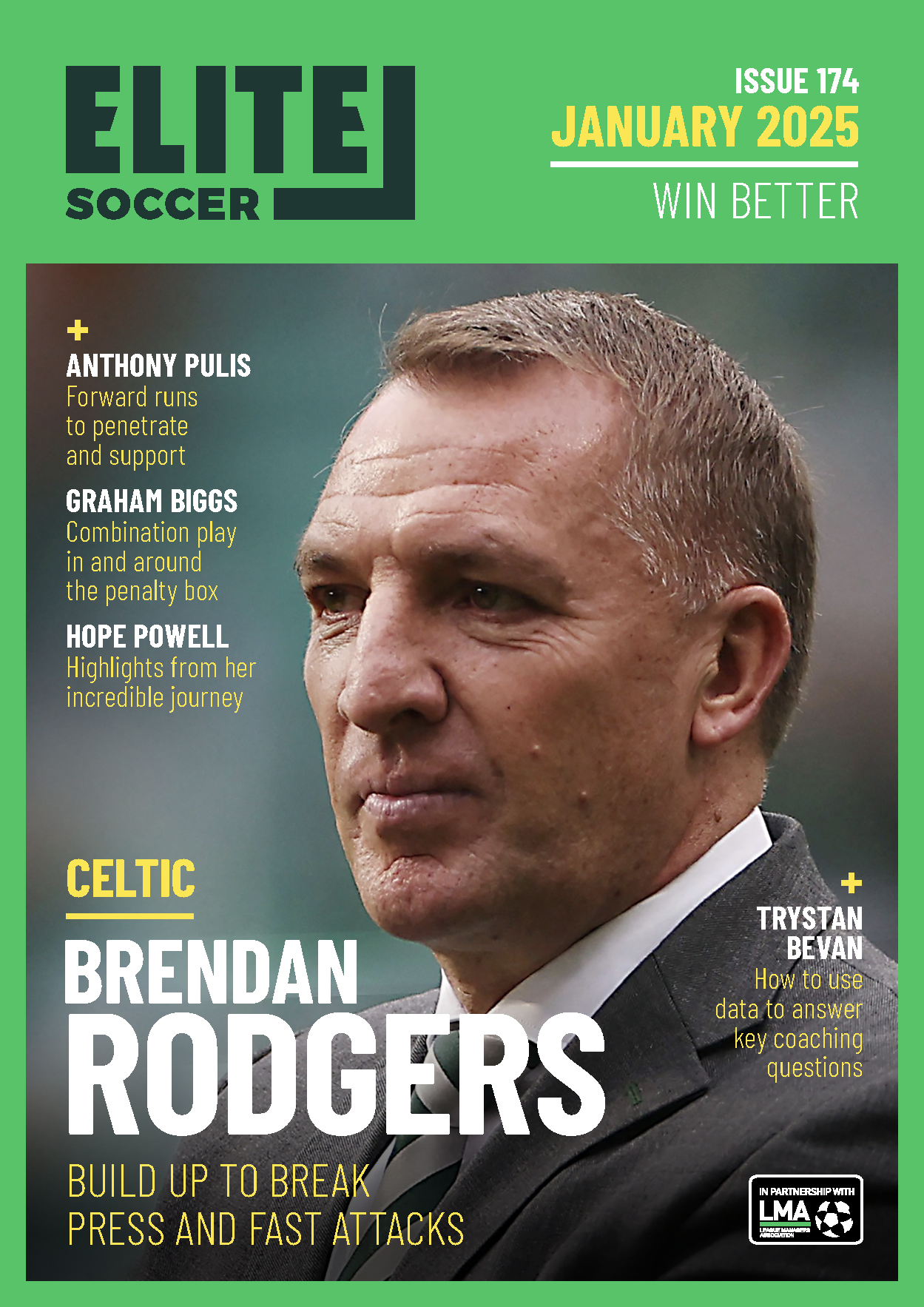You are viewing 1 of your 1 free articles
Linking through your centre-midfielder
The role of the centre-midfielder is a vital one in modern soccer and his effectiveness and resourcefulness is best practised with regular repetition of technique and job role.
| Area | Pitch between the 18yard boxes |
| Equipment | Balls, cones, goals |
| No. of Players | 10v9 plus 2 goalkeepers |
| Session Time | 20mins |
The role of the centre-midfielder is a vital one in modern soccer and his effectiveness and resourcefulness is best practised with regular repetition of technique and job role.
This is a session I first outlined when with Besiktas back in 2011, but so solid and reliable is the role of the midfielder that it is as relevant now today as it was five years ago.
What do I get the players to do?
The defensive pivot
The objective of this first exercise is very broad, however it aims at the link between the defenders of the team (who recover possession) and the defensive pivot of one of the midfielders (who comes in support as a result of the opponent’s high pressure). All midfielders are encouraged to discover the best positioning in this situation.
While this trains our offensive organisation and defensive transition, we also train the defensive organisation and the offensive transition, linking with the midfield players of the defending team in a dynamic way, with a constant sequence of movements.
So to start, the reds (along with the yellow, who plays for the team in possession) play with a 6v4 overload, as shown (1a). They knock the ball around with the objective of scoring.
1a
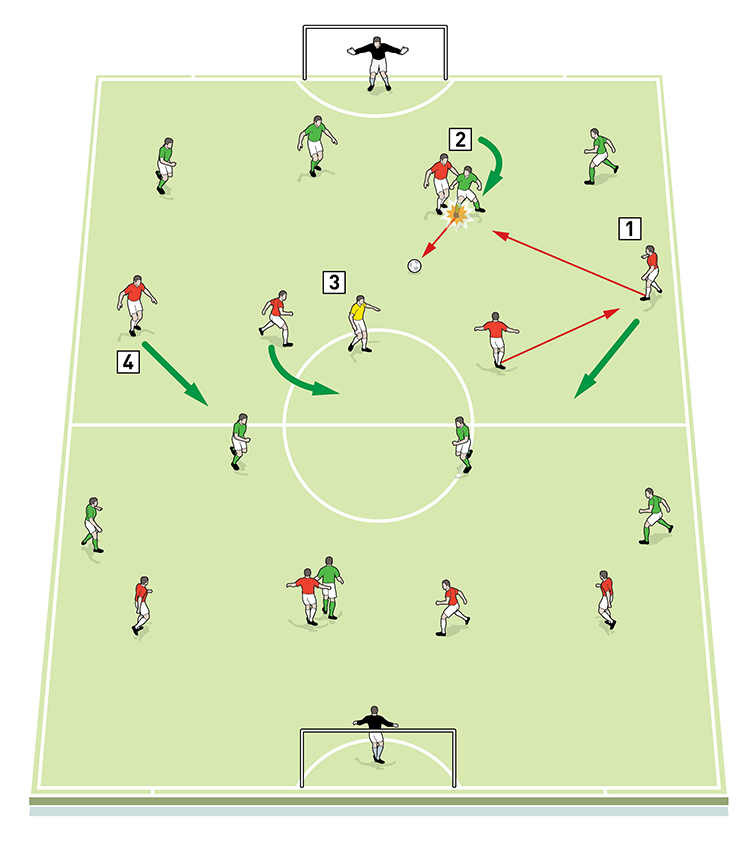
2. A green centre-back intercepts the intended pass to the red striker
3. Yellow now transitions into an attack for the green team
4. Reds pressure in order to try to close down the threat
Greens, who are at a numerical disadvantage, defend and try to recover possession. If they succeed, they can pass either directly or through the yellow centre-midfielder to one of their team mates in the attacking half. After losing possession, all reds transition to defence in trying to prevent the opposing team linking between the groups.
Once the ball crosses into the opposing midfield there is a new action of a 6v4 plus a keeper, with the inclusion of the yellow centre-midfielder now in the other half (1b).
1b
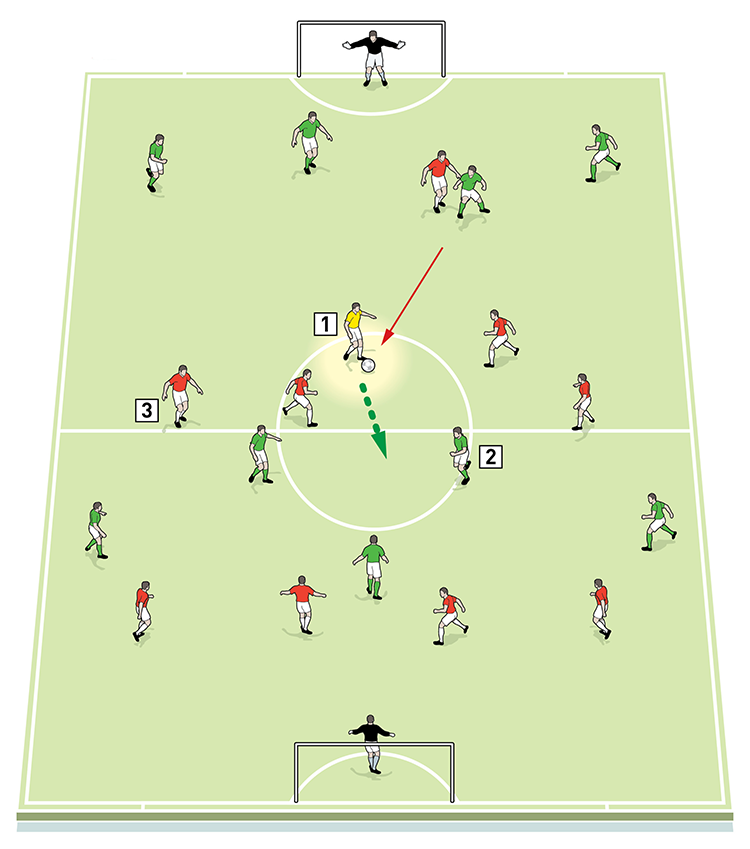
2. Greens move in to support
3. Reds cannot progress past the halfway line
In all exchanges, in the case of a goal or shot on goal the ball is restarted through the keeper.
How do I progress the practice?
Now we’re looking at linking defence and attack through the inside/pivot midfielders on the same playing area, as shown (2a). Again this is based on the use of neutral midfielders.
2a
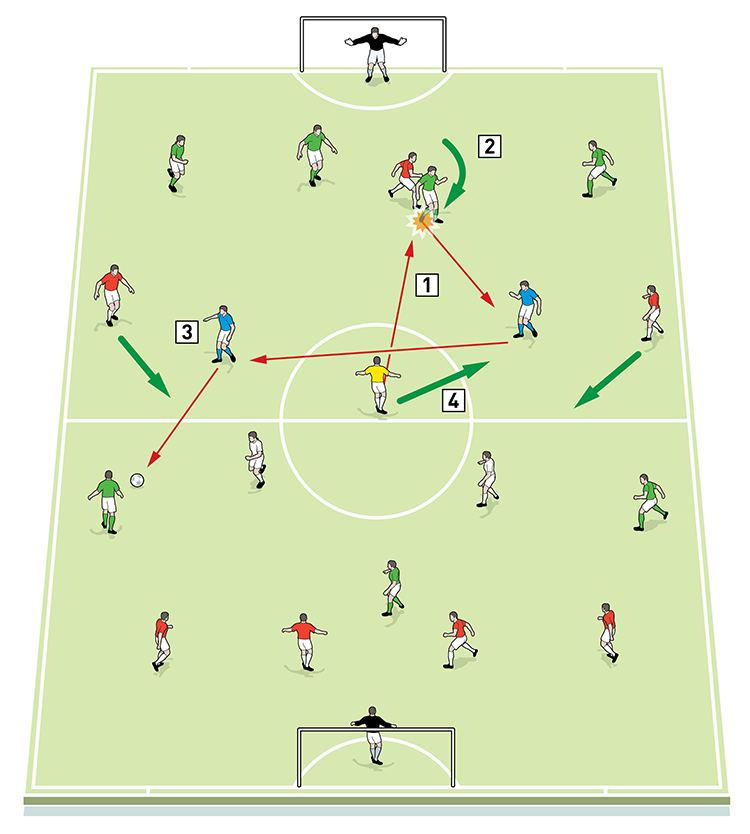
2. The green player intercepts
3. Blues now transition and become attackers
4. The yellow pivot midfielder remains on the red team and must now defend
Reds, in numerical advantage - along with two blues and the yellow - circulate the ball with a scoring objective against a defensive line, plus a keeper.
Greens play against the overload. Upon gaining ball possession, they must try to cross to the attacking half making at least one pass to the blue midfielders, who always play for the team in possession.
After losing possession, the yellow centre-midfielder, along with three forwards, transitions to defensive mode in trying to prevent the link between halves.
After the ball crosses to the other half, a new action of 6v4 plus a keeper starts, with green forwards, the yellow centre-midfielder and two white midfielders who, similar to the blue ones, always play in possession.
Again, if a goal is scored or there is a shot on goal, the game is restarted by the keeper.
This exercise is similar to the previous one with respect to its dynamic, but with different objectives in terms of the movement and pressure made by the defensive pivot, as shown (2b), and this is the key point. In short, we want our defensive pivot, along with the three forwards, to react appropriately to the point of possession loss. He does this by quickly shortening the distance between the two midfielders who play for the team in possession (either blues or whites), pressuring them quickly.
2b
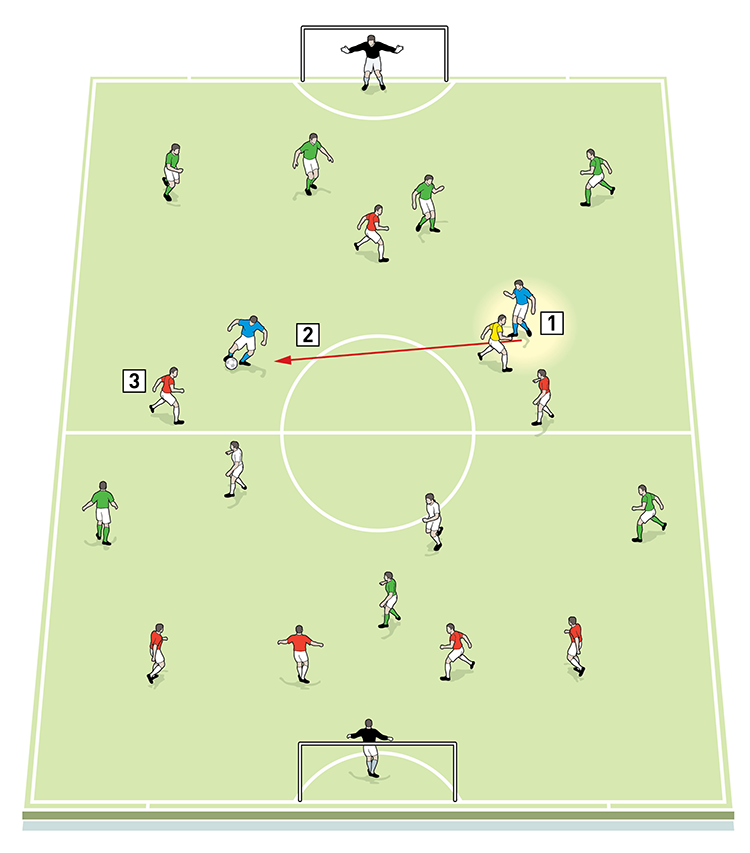
2. The blue player evades the threat and makes a square pass
3. Reds track back to press the man in possession
For the team which has assumed possession, at the time of transition we also want to see a sudden switch of team mentality, from defending to linking with centre-midfielders, as well as players discovering the best positioning to link the game with the attacking half.
Related Files
Editor's Picks
Using the goalkeeper in build-up play
Pressing principles
Intensive boxes drill with goals
Penetrating the final third
Creating and finishing
My philosophy
Pressing initiation
Compact team movement
Defensive organisation
Coaches' Testimonials

Alan Pardew

Arsène Wenger

Brendan Rodgers

Carlos Carvalhal

José Mourinho

Jürgen Klopp

Pep Guardiola

Roy Hodgson

Sir Alex Ferguson

Steven Gerrard
Coaches' Testimonials

Gerald Kearney, Downtown Las Vegas Soccer Club

Paul Butler, Florida, USA

Rick Shields, Springboro, USA

Tony Green, Pierrefonds Titans, Quebec, Canada
Join the world's leading coaches and managers and discover for yourself one of the best kept secrets in coaching. No other training tool on the planet is written or read by the calibre of names you’ll find in Elite Soccer.
In a recent survey 92% of subscribers said Elite Soccer makes them more confident, 89% said it makes them a more effective coach and 91% said it makes them more inspired.
Get Monthly Inspiration
All the latest techniques and approaches
Since 2010 Elite Soccer has given subscribers exclusive insight into the training ground practices of the world’s best coaches. Published in partnership with the League Managers Association we have unparalleled access to the leading lights in the English leagues, as well as a host of international managers.
Elite Soccer exclusively features sessions written by the coaches themselves. There are no observed sessions and no sessions “in the style of”, just first-hand advice delivered direct to you from the coach.
